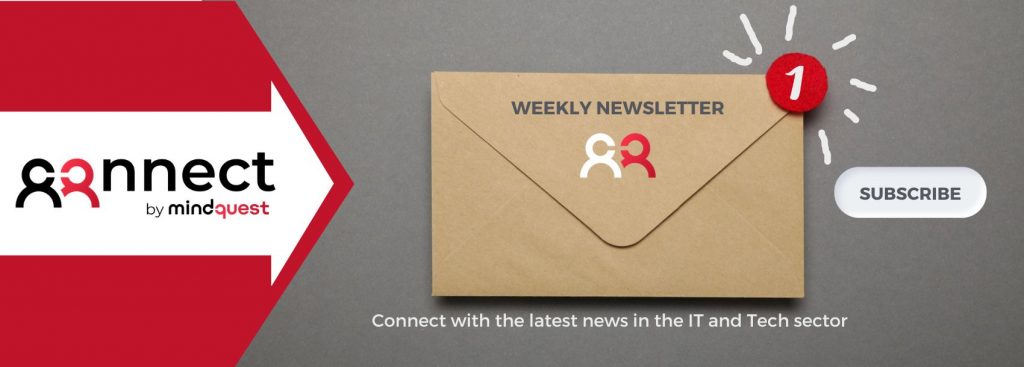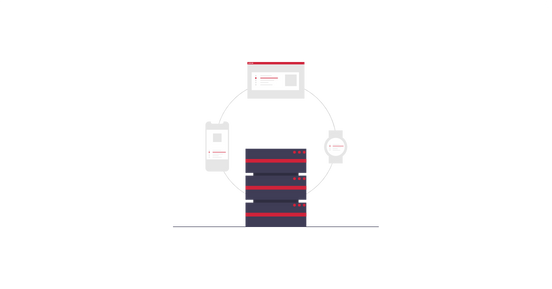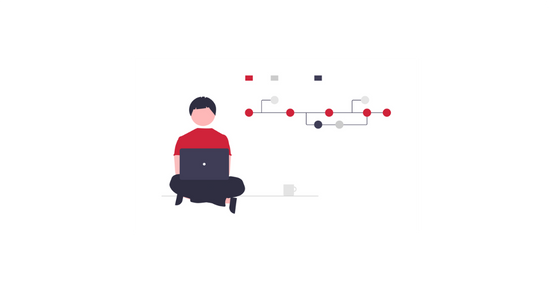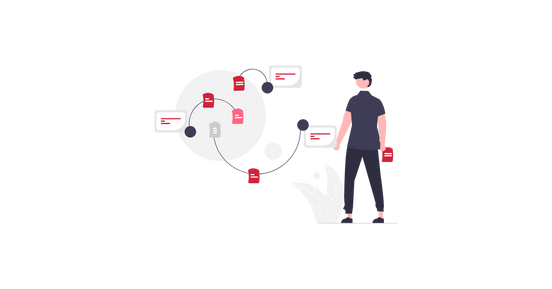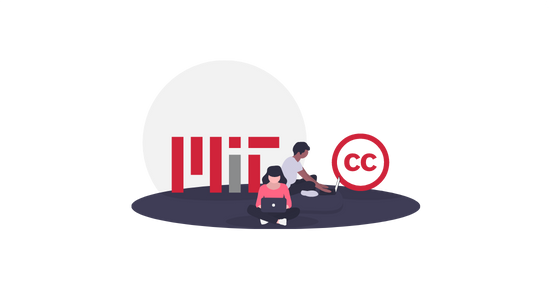IT procurement plays a crucial role in achieving strategic goals and ensuring operational efficiency. By thoroughly understanding the IT procurement process, organizations are better equipped to make informed decisions that align their technology acquisitions with overall business objectives. In this guide, we delve into what IT procurement entails, explore its numerous benefits, address common challenges, and outline best practices to help enhance your procurement strategy.
Need advice on how to start or develop your freelance consulting business in tech or IT? Need to start a new permanent or freelance assignment? Join Mindquest and get support from our team of experts.

What is Procurement?

Over time, business boundaries have become blurred and the speed of change is increasing. That is why it is important to have a thorough understanding of what procurement is and how to manage it effectively with digital security and cyber security, as this concept has a high capacity to influence a company’s profitability, competitiveness and sustainability.
So, the term procurement refers to the end-to-end process of acquiring goods, services and resources necessary for the operation of an organisation, encompassing a broad spectrum of strategic activities that directly impact an organisation’s value chain.
Knowing this, the use of technological tools and solutions for informed decision making allows optimizing costs, mitigating risks, guaranteeing the quality of products and services and strengthening relationships with key suppliers.
So, let’s define what procurement is. Thus, the process of obtaining or purchasing goods and services, typically for business purposes. It’s often associated with businesses because companies need to solicit services or purchase goods, usually on a large scale. Therefore, the procurement process is crucial for companies leading up to a final purchasing decision. Companies can be on both sides of the procurement process as buyers or sellers, but here, we mainly focus on the side of the soliciting company.
How it Works:
But, how does it actually work? Well, managing procurement can require a significant portion of a company’s resources. Why?
Firstly, budgets provide managers with a specific value they can spend. Then, the process includes preparation, demand processing, receipt, and payment approval. This can also involve purchase planning, standards determination, supplier research, selection, financing, price negotiation, and inventory control. Thus, many large companies require support from various departments for successful procurement.
The role of technology in procurement

Technology impacts and improves the procurement process in the following ways:
Operational efficiency: it automates repetitive tasks and manual processes, leading to greater operational efficiency in the procurement process.
Reduce costs: by improving visibility, control and transparency of spend management, companies can identify opportunities to negotiate better prices with suppliers and eliminate unnecessary spend.
Informed decision making: procurement professionals have access to real-time data and advanced analytics.
Regulatory compliance and security policies: Enables IT security policies to be established and ensures compliance with internal and external regulations and policies, avoiding legal and financial consequences.
Improved risk management: facilitates more effective risk management by identifying and mitigating issues in real time.
Agility and flexibility: makes the process more agile and adaptable to changes in the business environment.
Technological tools and solutions for procurement
The procurement process benefits from a number of technological tools and solutions, such as:
Robotic Process Automation (RPA).

Not only does it streamline and improve repetitive manual tasks, but it also helps free up valuable time, allowing professionals to focus on strategic tasks.
Some examples of how robotic process automation can contribute to procurement optimisation are:
- Quote comparison: bots can make accurate comparisons between quotes from various suppliers to assess not only costs, but also other critical factors, providing a holistic view that facilitates informed decision-making and contributes to cost optimisation.
- Supplier management: automation enables automatic tracking of delivery schedule compliance, product quality, supplier compliance and contract lifecycle to anticipate potential problems, proactively optimise business relationships and ensure transparency in the supply chain.
- Automatic purchase order generation: through automation, it is possible to schedule the automatic generation of purchase orders based on certain parameters, such as forecasted demand or inventory levels.
- Automatic order tracking: enables real-time tracking of the status of purchase orders and provides automatic updates to the relevant teams, improving visibility and coordination.
Data analytics and business intelligence

Data analytics software related to purchasing and spend provides visual insights that facilitate informed decision making, such as:
- Supplier maps: enabling geographic visualization of supplier locations to assess logistics risks and opportunities.
- Supplier performance graphs: showing the historical performance quality of suppliers.
- Purchasing process flow diagrams: allows the identification of potential bottlenecks and areas for efficiency improvement.
- Cost analysis charts: facilitates visual comparison of costs between suppliers for cost-benefit based decision making.
- Risk map: for categorization of financial, operational and compliance risks.
- Pricing trend charts: assist in strategic decision making related to pricing and negotiation.
- Real-time dashboards: real-time visual alerts on critical events or significant deviations.
- Supply chain network diagrams: helps identify potential points of failure and enables supply chain optimization.
- Spend distribution charts: helps identify areas where cost-cutting or more effective negotiations can be made.
Blockchain for Supply Chain Management

Increases transparency and traceability in supply chain and procurement management.
What is IT Procurement?
IT procurement consists of a set of processes for the purchase and implementation of information technology (IT) in accordance with the organisation’s strategy. An organisation that uses IT must have some way of procuring the IT products and services it needs to operate. IT procurement ranges from ad-hoc to very detailed and highly strategic practices. In general, IT procurement involves a set of processes that focus on identifying strategic and business demands for IT, selecting appropriate solutions, and then executing the procurement itself. Often, separate processes are used for new initiatives versus upgrades to existing IT.
Why is IT Procurement Important?
Procuring IT is about more than just buying IT products and services. IT procurement is vital for the realization of strategic and operational goals. Given the centrality of IT to business success and overall transformation, IT procurement should engage key stakeholders from business, finance, and IT itself. The process identifies how IT can serve the business and follows through with the best possible IT investment decisions. Every modern business relies on technology to operate, making IT procurement an essential part of success.
Leveraging Digital Transformation in IT Procurement

Digital transformation is revolutionizing IT procurement. By adopting digital tools and technologies, organizations can enhance procurement efficiency, reduce costs, and improve supplier management. Key technologies include:
- Artificial Intelligence (AI): AI enhances decision-making by analyzing data patterns and predicting future needs. It helps automate routine tasks, forecast demand, and optimize supply chain management, making the entire process more efficient and less prone to errors.
- Blockchain: This technology improves the security and transparency of transactions. By providing a decentralized and immutable record of all transactions, blockchain reduces the risk of fraud and ensures that all parties have access to accurate and tamper-proof information.
- Cloud Computing: Cloud-based solutions offer flexibility and scalability, allowing businesses to access and manage their technology resources from anywhere. This approach supports remote work, facilitates real-time collaboration, and helps organizations scale their operations without heavy upfront investments in physical infrastructure.
Incorporating these digital innovations can significantly enhance how companies acquire and manage their technology, ultimately leading to better efficiency and strategic advantages.
Types of IT Procurement
Direct: Involves goods and services used during the production process, such as hardware and software.
Indirect: Includes goods and services for operational needs, like office supplies and marketing services.
Goods: Physical products acquired to meet the company’s needs.
Services: Services provided by individuals, such as consulting or maintenance services.
Competitive Bidding and IT Procurement
Competitive bidding is a vital aspect of IT procurement, especially for large-scale projects. It also involves soliciting bids from multiple suppliers and choosing the one that offers the best value. This process ensures that organizations get the best possible deal while maintaining quality and efficiency.
Procurement vs. Purchasing in IT
While procurement is a strategic process focusing on value and long-term needs, purchasing is transactional and meets immediate requirements. Thus, understanding the difference helps companies manage their resources effectively and plan for future growth.
Procuring IT is about more than just buying IT products and services. Therefore, IT procurement is vital for the realization of strategic and operational goals. Given the centrality of IT to business success and overall transformation, IT procurement should engage key stakeholders from business, finance, and IT itself. The process also identifies how IT can serve the business and follows through with the best possible IT investment decisions. Every modern business relies on technology to operate, making IT procurement an essential part of success.
The IT Procurement Process
Understanding the stages of the IT procurement process is crucial for effective management. Here’s a comprehensive look at the lifecycle:
Needs Identification: Determine the technology requirements of the organization.
Market Research: Identify potential suppliers and solutions.
Solicitation: Issue requests for proposals (RFPs) or quotes (RFQs).
Evaluation: Assess proposals based on cost, functionality, and supplier reliability.
Negotiation: Negotiate terms, prices, and conditions with selected suppliers.
Contract Award: Finalize and award the contract to the chosen supplier.
Implementation: Deploy and integrate the acquired technology.
Performance Review: Monitor and evaluate the performance of the technology and supplier.
Benefits of IT Procurement

In addition, effective IT procurement can lead to significant benefits, including:
Cost Savings: Through strategic sourcing and negotiation, organizations can achieve substantial cost reductions.
Risk Management: By adhering to compliance standards and implementing risk management practices, organizations can mitigate potential risks.
Efficiency: Streamlined procurement processes enhance operational efficiency.
Innovation: Access to cutting-edge technology can drive innovation within the organization.
Common Challenges and How to Overcome Them
Also, it is important to mention that IT procurement is not without its challenges. And here are some common issues and how to address them:
Complexity: The rapid pace of technological advancement can make procurement complex. Stay updated with the latest trends and continuously educate your procurement team.
Supplier Risk: Dependence on key suppliers can be risky. Mitigate this by diversifying your supplier base and conducting thorough due diligence.
Compliance: Ensuring compliance with various regulations can be daunting. Implement robust compliance management systems and regular audits.
Best Practices

Moreover, implementing effective strategies can greatly enhance the efficiency and success of acquiring IT resources. And here are some key recommendations to consider:
Develop a Clear Strategy: Start by crafting a comprehensive plan that aligns with your organization’s objectives. This strategy should outline how technology acquisitions will support your business goals, streamline operations, and contribute to overall success.
Leverage Technology Solutions: Utilize specialized software tools to automate and simplify the acquisition process. These tools can help manage requests, track spending, and ensure compliance with company policies, making the entire process more efficient and transparent.
Consider Total Cost of Ownership (TCO): Evaluate all costs associated with acquiring and using the technology, beyond just the initial purchase price. This includes maintenance, training, support, and any potential upgrade costs. Understanding the full financial impact helps in making more informed decisions.
Promote Collaboration: Foster a collaborative environment between IT and purchasing teams. Open communication ensures that both departments are aligned on technology needs and can work together to address any challenges that may arise during the acquisition process.
Essential Skills for Professionals
Also, professionals in IT procurement need a diverse skill set to navigate the complexities of the field.
Proficiency in key areas such as analytical skills, negotiation, risk management, and communication is essential. The ability to analyze market trends and evaluate supplier proposals enables informed decision-making. Coupled with strong negotiation skills, it allows for securing the best terms and prices. Moreover, expertise in risk management is crucial for identifying and mitigating potential risks. Additionally, effective communication plays a vital role in collaborating with stakeholders and suppliers, ensuring that all parties are aligned and working towards common goals.
Certification and Training

Also, to excel in IT procurement, obtaining relevant certifications and training can be highly beneficial. Some popular certifications include: To excel in IT procurement, obtaining relevant certifications and training can be highly beneficial. Among the popular certifications, the Certified Professional in Supply Management (CPSM) stands out for its comprehensive coverage of supply chain management. Additionally, the Certified Technology Procurement Manager (CTPM) certification is specifically tailored for those focusing on technology procurement, providing specialized knowledge in this area. Furthermore, the ITIL Foundation Certification is valuable as it equips professionals with a solid understanding of IT service management, further enhancing their capabilities in the procurement field. To excel in IT procurement, obtaining relevant certifications and training can be highly beneficial. Some popular certifications include:
Leveraging Digital Transformation
Digital transformation is reshaping how organizations handle technology acquisitions and supplier relationships. Therefore, by integrating advanced digital tools and technologies, businesses can streamline their processes, cut costs, and manage suppliers more effectively. Here are some key technologies driving this change:
- Artificial Intelligence (AI): AI enhances decision-making by analyzing data patterns and predicting future needs. It helps automate routine tasks, forecast demand, and optimize supply chain management, making the entire process more efficient and less prone to errors.
- Blockchain: This technology improves the security and transparency of transactions. By providing a decentralized and immutable record of all transactions, blockchain reduces the risk of fraud and ensures that all parties have access to accurate and tamper-proof information.
- Cloud Computing: Cloud-based solutions offer flexibility and scalability, allowing businesses to access and manage their technology resources from anywhere. This approach also supports remote work, facilitates real-time collaboration, and helps organizations scale their operations without heavy upfront investments in physical infrastructure.
FAQs

What considerations should be made for IT services in the procurement process?
When procuring IT services, considerations should focus on:
- Service Level Agreements (SLAs): Clearly defined SLAs ensure that the vendor delivers the promised performance and uptime.
- Integration Capabilities: The IT service should integrate seamlessly with existing systems to enhance functionality and user experience.
- Support and Maintenance: Reliable customer support and regular maintenance are vital for minimizing downtime and ensuring continuous service availability.
What are some IT procurement best practices to enhance cybersecurity?
Enhancing cybersecurity in IT procurement involves several best practices:
- Vendor Vetting: Ensure that all IT products and services meet strict cybersecurity standards before purchase.
- Certifications Check: Prefer vendors with reputable cybersecurity certifications.
- Contractual Agreements: Include cybersecurity requirements and protocols in contracts to enforce security standards.
- Continuous Monitoring: Regularly assess the cybersecurity posture of IT services and products to manage and mitigate risks effectively.




